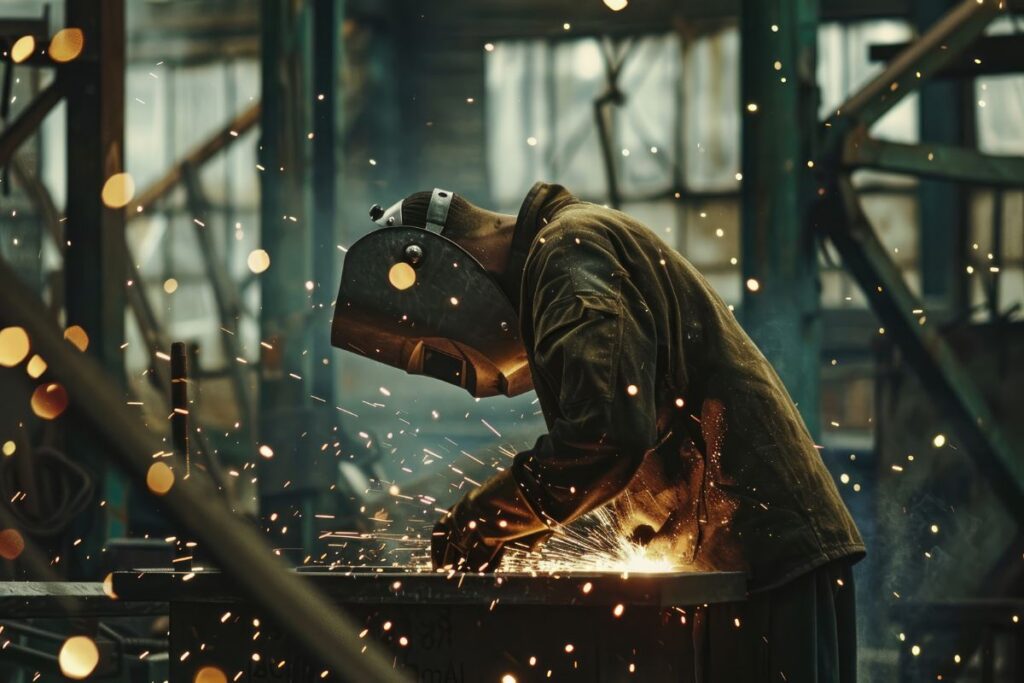
In an era where sustainability has become a vital aspect of every industry, welding is an unexpected but crucial player in the global shift toward eco-friendly practices. From recycling metals to creating the infrastructure that supports renewable energy, welding is instrumental in shaping a sustainable future. At the Welding Academy, we are deeply committed to fostering an environment where sustainability and craftsmanship work together.
Is it truly possible to incorporate sustainability into welding, an industry traditionally viewed as resource-intensive? The answer is yes. Let’s explore the different ways in which welding is not just adapting to, but actively contributing to the drive for sustainability.
The Role of Welding in Metal Recycling
Metal recycling is one of the cornerstones of sustainability in the welding industry. Welders have long understood the value of metal as a resource, and in recent years, the focus on recycling has grown stronger. Instead of discarding damaged or used metal, welders are repairing, reconditioning, and reusing these materials, which significantly reduces the need for mining new metals.
In New Zealand, recycling rates for metals such as steel and aluminium have steadily increased as industries seek more sustainable solutions. Steel is one of the most recycled materials in the world, with an estimated 98% of structural steel being reused or recycled.
For example, scrap metal can be melted down and used to create new products, and welders are pivotal in this process. By refining techniques that incorporate recycled metals, welders play a direct role in reducing waste in landfills, conserving energy, and cutting down on industrial emissions.
Creating Eco-Friendly Products Through Welding
Beyond recycling, welding is essential in creating the very products that drive sustainability. Welders are directly involved in the manufacturing of components for renewable energy systems such as wind turbines, solar panels, and energy-efficient infrastructure. This not only places them at the heart of sustainable technology but allows them to actively contribute to reducing the world’s reliance on fossil fuels.
In New Zealand, where renewable energy is a priority, welding is critical to the construction of wind and solar farms, which are essential for the country’s goal of achieving 100% renewable electricity generation by 2030. Welders are building everything from the towering structures that hold wind turbines to the metal frames used in solar panel arrays. Without the skill and precision of welders, these renewable energy projects could not reach their potential.
Welding also plays a crucial role in the automotive industry, particularly in the transition to electric vehicles (EVs). As New Zealand pushes toward electrification in our transport sector, welders are contributing by assembling lightweight, energy-efficient EVs, which have a far smaller carbon footprint.
Christchurch has seen an increase in demand for sustainable housing solutions. Many builders are now incorporating steel framing into home construction. Steel frames are not only more durable and resistant to environmental impacts like earthquakes but are also made from recyclable materials. This means that sustainable homes built today may be reprocessed and reused at the end of their life cycles, reducing overall environmental impact.
Advancements in Sustainable Welding Practices
Sustainability isn’t just about the products being welded; it’s also about how welding itself can be made more eco-friendly. In recent years, significant advancements have been made in welding technology to reduce its environmental impact.
One key development is the creation of energy-efficient welding machines. Traditional welding machines can consume significant amounts of power, but newer models are designed to use energy more efficiently, reducing the overall carbon footprint of welding operations. Some of these machines even incorporate smart technology to optimise energy use, automatically adjusting power output based on the type of weld being performed.
Another area of innovation is the use of greener welding gases. Shielding gases are essential in many types of welding to protect the weld from contamination, but traditional gases like argon and helium are sourced from non-renewable resources. In response, the industry is developing more sustainable alternatives, including gases that are more abundant or easier to produce in an eco-friendly manner. Additionally, there are efforts to reduce the overall consumption of shielding gases through improved welding techniques and equipment.
Challenges and Opportunities
While the welding industry has made strides toward sustainability, challenges remain. Some welding processes are inherently energy-intensive, and not all materials are easily recyclable. However, these challenges present opportunities for innovation. As technology continues to evolve, welders will likely see even more tools and techniques designed to minimise the environmental impact of their work.
For instance, research is being conducted into additive manufacturing (3D printing) using metal, which could revolutionise welding by reducing waste and enabling more precise use of materials. This innovation could eventually lead to a future where welding is not only sustainable but also one of the most environmentally friendly methods of fabrication.
The Future of Welding is Sustainable
Sustainability in welding is not a distant dream, it’s an emerging reality that is reshaping the industry. From recycling metal and producing eco-friendly products to embracing greener technologies and practices, welding is making its mark on the path toward a more sustainable world. The Welding Academy is proud to be part of this movement, training the welders of tomorrow to embrace sustainability as a core component of their craft.
If you’re interested in pursuing a career in welding and want to be part of the future that prioritises both skill and sustainability, consider joining us at the Welding Academy. Together, we can forge a greener, more sustainable world, one weld at a time.